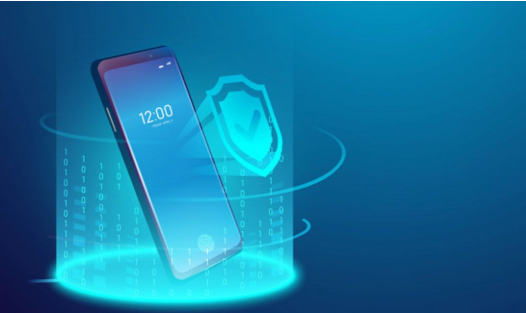In today’s hyper-connected world, mobile banking apps have transcended mere convenience to become the central hub for financial interactions. This pivotal role, however, brings forth a profound obligation: ensuring the absolute security of your users and the integrity of your institution. For a banking executive, treating mobile app security as anything less than a top priority is a gamble with potentially catastrophic consequences. Data breaches, fraudulent activities that erode customer confidence, and the ensuing reputational damage can inflict long-lasting harm. This expanded guide aims to provide you with a more in-depth understanding of the threat landscape and the comprehensive strategies necessary to fortify your mobile banking app, thereby safeguarding your customers’ trust and your organization’s future.
The Expanding and Increasingly Sophisticated Threat Landscape
The digital realm surrounding mobile banking apps is a dynamic battlefield where cybercriminals continuously refine their tactics. The threats are no longer rudimentary; they are sophisticated and multifaceted, demanding an equally advanced and layered defense. Key threats include:
- Malware and Phishing Campaigns: These attacks are becoming increasingly targeted and deceptive. Malicious applications, often disguised as legitimate software, can infiltrate devices to steal login credentials, financial details, and other sensitive information. Phishing schemes, delivered through various channels like email and SMS, are designed to trick users into divulging confidential data.
- Man-in-the-Middle (MitM) Attacks: These insidious attacks involve the interception of communication streams between a user’s device and the bank’s secure servers. By eavesdropping or even manipulating the data exchange, attackers can gain unauthorized access to sensitive information or conduct fraudulent transactions.
- Reverse Engineering and Code Tampering: Skilled attackers may attempt to decompile your mobile application’s code to uncover underlying vulnerabilities, hidden backdoors, or sensitive information embedded within the app itself. Once vulnerabilities are identified, they can be exploited to launch targeted attacks or tamper with the app’s functionality for malicious purposes.
- Data Breaches and Data Leakage: Weaknesses in how sensitive data is stored, processed, and transmitted represent critical vulnerabilities. Insufficient encryption, insecure storage mechanisms, or flaws in data handling processes can lead to significant data breaches, exposing vast amounts of user information to unauthorized access.
Building an Impregnable Defense: Proactive Security Measures
A truly effective security posture goes beyond simply reacting to threats; it necessitates a proactive, deeply integrated approach woven into the very fabric of your mobile app’s lifecycle. Consider these essential pillars:
- The Secure Development Lifecycle (SDLC): Security must be a core consideration from the initial conceptualization of your mobile banking app through its deployment and ongoing maintenance. This includes:
- Comprehensive Threat Modeling: Before a single line of code is written, conduct rigorous threat modeling exercises to anticipate potential attack vectors, identify critical assets, and understand the associated risks.
- Enforcing Secure Coding Practices: Establish and strictly enforce secure coding guidelines and best practices across your entire development team. This minimizes the introduction of common vulnerabilities during the coding process.
- Implementing Regular Security Audits: Schedule and execute comprehensive mobile app audits at various stages of development and post-deployment. These audits, often conducted by independent security experts, can uncover potential security flaws that internal teams might overlook.
- Multi-Layered Authentication Mechanisms: Enhance user security significantly by implementing robust multi-factor authentication (MFA). Explore a combination of authentication factors, such as biometric authentication (fingerprint, facial recognition), one-time passwords (OTPs) delivered via SMS or authenticator apps, and device-based authentication to establish a strong and layered defense against unauthorized access.
- End-to-End Data Encryption: Employ robust encryption algorithms and secure protocols to encrypt all sensitive data both while it is being transmitted between the user’s device and your servers (in transit) and when it is stored on the device and your backend systems (at rest). This ensures that even if data is intercepted or accessed without authorization, it remains unintelligible to the attacker.
- Consistent and Timely Security Updates: Establish a rigorous process for regularly updating your mobile banking app with the latest security patches and bug fixes released by operating system vendors and third-party libraries. Promptly addressing known vulnerabilities is crucial in mitigating potential risks.
- Regular and Realistic Penetration Testing: Engage independent cybersecurity experts to conduct periodic penetration testing. These simulated real-world attacks aim to identify weaknesses and vulnerabilities in your app’s security defenses by attempting to exploit them under controlled conditions. The insights gained from penetration testing are invaluable in strengthening your security posture.
Cultivating Customer Confidence: The Power of Transparency
In the realm of financial services, trust is paramount. Open and clear communication about your security measures can significantly bolster customer confidence:
- Clear Security Disclosures: Be transparent with your users about the specific security measures you have implemented to protect their data and transactions. Explain these measures in a clear and easily understandable manner within your app and on your website.
- Comprehensive Data Privacy Policy: Maintain a readily accessible and easy-to-understand data privacy policy that clearly outlines how user data is collected, used, and, most importantly, protected. Be explicit about your commitment to data security and user privacy.
- Well-Defined Security Incident Response Plan: Develop and rigorously test a comprehensive security incident response plan. This plan should outline the procedures for identifying, containing, eradicating, and recovering from security breaches. Regularly testing this plan ensures that your team is prepared to effectively handle security incidents and minimize their impact on your users and your institution.
Embracing Innovation: Leveraging Cutting-Edge Technologies
The ongoing battle against cyber threats necessitates a willingness to explore and adopt innovative security technologies:
- The Potential of Blockchain Technology: Investigate the potential applications of blockchain technology for enhancing security in areas such as secure data storage, immutable transaction records, and decentralized identity management.
- Harnessing Artificial Intelligence (AI) and Machine Learning (ML): Explore the use of AI and ML algorithms for advanced fraud detection, real-time anomaly detection, and proactive threat assessment. These technologies can identify suspicious patterns and behaviors that traditional security systems might miss.
- Exploring Behavioral Biometrics: Consider implementing behavioral biometrics, which go beyond traditional fingerprint or facial recognition by analyzing unique user interaction patterns (e.g., typing speed, swipe patterns, navigation habits) to detect and prevent unauthorized access based on deviations from established user behavior.
The Imperative of Continuous Improvement in a Dynamic Landscape
The cybersecurity landscape is in a constant state of flux, with new threats and vulnerabilities emerging regularly. Therefore, a commitment to continuous improvement is not optional; it is a fundamental requirement for maintaining a strong security posture:
- Frequent Security Assessments: Conduct regular and thorough security assessments to evaluate the ongoing effectiveness of your implemented security measures and proactively identify areas where improvements are needed.
- Staying Informed and Educated: Ensure that your security teams and relevant stakeholders stay abreast of the latest security threats, emerging vulnerabilities, and evolving best practices through continuous engagement with industry publications, participation in cybersecurity conferences, and ongoing training programs.
- Strategic Collaboration with Security Experts: Forge strong partnerships with reputable cybersecurity experts and consult with industry leaders to gain valuable insights, access specialized knowledge, and adopt proven best practices in mobile app security.
Navigating the Unique Challenges of the Banking and Fintech Sectors
The rapid advancements and increasing user adoption within the mobile banking industry trends highlight the critical importance of robust security. The specific processes of mobile banking app development present distinct security challenges that demand meticulous attention:
- Stringent Regulatory Compliance: Adherence to a complex web of stringent regulatory requirements imposed by financial authorities and data protection regulations (such as GDPR, CCPA, and local financial industry standards) is not merely a legal obligation but a fundamental aspect of maintaining operational integrity and customer trust.
- The Extreme Sensitivity of Data: Mobile banking applications handle highly sensitive financial data, personally identifiable information (PII), and transaction details, making them exceptionally lucrative targets for cyberattacks. The potential for significant financial loss and identity theft underscores the critical need for robust security controls.
- The Paramount Importance of Maintaining Customer Trust: In the financial sector, trust is the bedrock of customer relationships. A single, well-publicized security breach can inflict severe and potentially irreparable damage to a bank’s reputation, leading to a loss of customer confidence and significant business repercussions.
Furthermore, as you navigate the fintech app development landscape, remember that while innovation drives growth, security must remain a foundational element. The interconnectedness of financial technologies introduces new and complex security challenges that require a holistic and forward-thinking approach.
Conclusion: Security as a Strategic Imperative
In the fiercely competitive realm of mobile banking, security is no longer a technical add-on or an afterthought; it is a fundamental strategic imperative that underpins customer trust, regulatory compliance, and long-term business success. By proactively prioritizing robust security measures, diligently embracing emerging security technologies, and fostering an organizational culture that champions continuous improvement, banking executives can build mobile banking experiences that are not only convenient and user-friendly but also secure and trustworthy for their valued customers. Remember, in this digital era, security is not merely a technical challenge to be overcome; it is the very cornerstone upon which customer trust and enduring business success are built.







